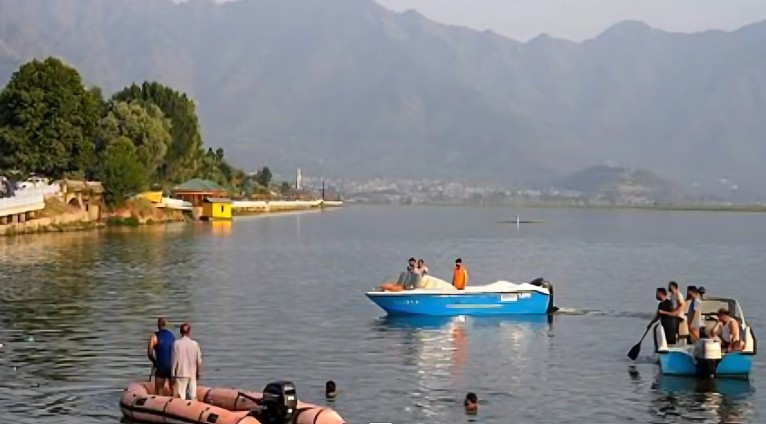Kashmir Faces Unprecedented Heatwave: Decoding the Causes and Impacts
4 min read
Srinagar, July 8, 2025 – The Kashmir Valley, renowned for its cool climate and serene landscapes, is grappling with an unprecedented heatwave that has shattered temperature records and raised alarm among residents, farmers, and environmentalists. On July 5, Srinagar recorded its highest daytime temperature in over seven decades, while Pahalgam, a popular hill station, logged its hottest day ever. Following the hottest June in nearly 50 years, these soaring temperatures signal a troubling shift in the region’s climate. As heavy monsoon showers loom, threatening flash floods and landslides, India Prime Times breaks down the factors driving this extreme weather and its far-reaching consequences.
Background: A Changing Climate in Kashmir
Kashmir, often dubbed “Paradise on Earth,” has long been synonymous with pleasant weather, snow-capped peaks, and lush valleys. However, recent years have seen a noticeable departure from this idyllic norm. The region is increasingly experiencing extreme weather events, from prolonged dry spells to intense heatwaves. This summer, temperatures have consistently breached historical highs, with Srinagar hitting 35.3°C on July 4 and Qazigund recording a night temperature of 23.4°C, surpassing a 1997 record. Pahalgam and Kokernag also reported near-record nighttime temperatures, underscoring the severity of the heatwave.
Experts attribute these changes to a combination of global and local factors, with climate change at the forefront. “The global rise in temperatures is undeniable, and Kashmir is not immune,” says Dr. Suruchi Bhadwal, Senior Fellow at The Energy and Resources Institute (TERI). “We’re seeing a consistent increase in both maximum and minimum temperatures, with extreme weather becoming more frequent.”
Breaking Down the Heatwave: Key Contributing Factors
1. Climate Change and Rising Global Temperatures
- The global average temperature has risen by approximately 1.1°C since pre-industrial times, but Kashmir has experienced a more pronounced increase, with local temperatures rising by up to 6°C in some areas.
- This warming trend amplifies heatwaves, making them longer and more intense. The lack of sufficient snowfall in the Pir Panjal and Himalayan ranges has reduced the cooling effect of snowmelt, exacerbating summer heat.
2. Prolonged Dry Spells and Rainfall Deficit
- Kashmir is facing a 50% rainfall deficit this year, a result of weakened monsoon patterns and reduced autoconvective rainfall, which typically moderates summer temperatures.
- The Jhelum River, a critical water source, is running at historically low levels, impacting irrigation and intensifying the heat.
3. Deforestation and Environmental Degradation
- Rampant deforestation and the destruction of water bodies have altered Kashmir’s microclimate. Forests, which act as natural temperature regulators, have been cleared for agriculture and urban expansion.
- The loss of wetlands and water bodies has reduced evaporative cooling, contributing to higher temperatures.
4. Urban Heat Island (UHI) Effect
- While less pronounced than in megacities like Delhi or Mumbai, Srinagar’s growing urbanization is creating localized UHI effects. Concrete structures and reduced green cover trap heat, pushing temperatures higher in urban pockets.
- “Increased population density and unplanned urban growth are amplifying heat in Srinagar,” notes Dr. Bhadwal.
Impacts on Kashmir’s Ecosystem and Economy
The heatwave’s ripple effects are threatening Kashmir’s delicate ecosystem and its agriculture-based economy:
- Water Scarcity: The Jhelum River’s diminished flow is jeopardizing irrigation for crops like paddy and saffron, while also impacting hydropower generation and tourism.
- Agricultural Losses: Crops such as maize, saffron, and apples are highly sensitive to temperature spikes. Apple orchards, a cornerstone of Kashmir’s economy, face reduced yields due to water shortages and heat stress.
- Health Risks: Rising temperatures pose health challenges, particularly for vulnerable groups like children and the elderly. Schools in Srinagar, often lacking proper ventilation, report increased cases of heat-related illnesses.
- Tourism: The heatwave is deterring visitors to popular destinations like Pahalgam and Gulmarg, threatening the tourism sector, which accounts for a significant portion of the region’s revenue.
Mitigation Measures: How to Cope with the Heat
Experts recommend immediate and long-term strategies to address the heatwave’s impact:
- Short-Term Actions:
- Stay hydrated and avoid outdoor activities during peak heat hours (11 AM to 3 PM).
- Use shade, umbrellas, or cooled indoor spaces to minimize heat exposure.
- Schools and workplaces should stagger hours and ensure access to cooling systems.
- Long-Term Solutions:
- Reforestation and wetland restoration to restore natural cooling mechanisms.
- Sustainable urban planning to reduce the UHI effect, including green roofs and urban forests.
- Investment in climate-resilient agriculture, such as drought-resistant crop varieties.
Weather Outlook: From Heat to Heavy Rains
The Meteorological Department forecasts a shift from scorching heat to heavy monsoon showers starting July 6. While this may bring temporary relief, it also raises concerns about flash floods, landslides, and waterlogging, particularly in low-lying areas and near rivers. Authorities have issued advisories urging residents in hilly regions to remain vigilant and avoid unnecessary travel during heavy rainfall. Farmers are advised to pause irrigation and field operations to prevent crop damage.
A Call to Action
The record-breaking heatwave in Kashmir is a stark reminder of the broader climate crisis affecting even the most temperate regions. As temperatures soar and weather patterns become unpredictable, the need for collective action is urgent. From adopting sustainable practices to advocating for stronger environmental policies, residents and policymakers alike must work together to safeguard Kashmir’s unique ecosystem and way of life.





